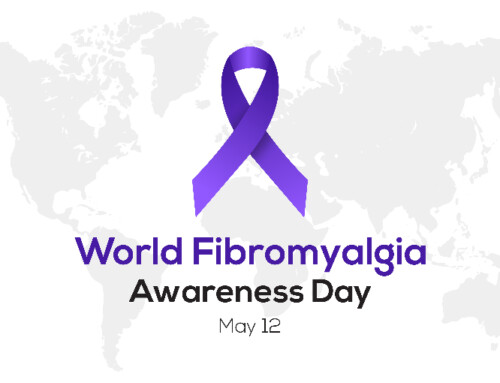A Beginner’s Guide To Pain Reprocessing Therapy and Its Benefits
Living with chronic pain is excruciating, mentally exhausting, and isolating. You work hard to manage your symptoms and minimize your pain to live as “normal” as possible. This is an extremely difficult task. It’s even more difficult when most people don’t understand.
If you’re living with chronic pain, you’re tired of hearing things like:
- You “look fine”
- “Have you tried….(insert run-of-the-mill intervention here)”
- “It could always be worse”
You’ve tried everything you can think of – over-the-counter medications, prescription medications, physical therapy, steroid injections, acupuncture, and home remedies. But you didn’t get any results. And you’re still trying to manage debilitating chronic pain.
What people don’t see is that you:
- Live in fear of when the pain will come back
- Worry you won’t be able to do the things you love
- Feel depressed, anxious, and isolated from the world
If you’re one of the 25 million people in the United States who are experiencing chronic pain, you’re all too familiar with this. And despite reported spending of $600 billion dollars a year in the United States – existing treatments don’t give relief for many people.1
As therapists, we want to empower you to make the best decisions for your life and to help you reach your pain management goals. That’s why we created this guide to help you understand more about an emerging, evidence-based therapy to address chronic pain in a way that’s never been done before. Pain Reprocessing Therapy (PRT) gives unprecedented relief to those who need it most.
Here’s why.
The Brain’s Role In Pain Perception
Chronic pain has been researched for years, and many studies have found interesting results.
Let’s talk about back pain for a minute. Back pain is the most common form of chronic pain, and in 85% of the cases, there is no physical cause for the pain.2
If you’re suffering daily from chronic pain, we know your pain is real.
But in many cases of chronic pain, doctors find:1
- There isn’t a physical cause for the pain
- The pain lingers after an injury has healed
- There is minimal structural damage but not enough to cause pain (according to doctors)
So, what’s causing the pain?
Believe it or not, the brain is the source of the pain. There are changes that occur in the brain that cause pain to stick around. Simply put: the brain learns the pain.2
Let’s talk about how.
Whenever you learn something new, your brain forms a neural pathway. Simply put, a neural pathway is when a group of brain cells (called neurons) communicates with other parts of your brain. These neurons communicate by sending chemical signals to other parts of the brain. The more your brain does this, the stronger the pathway becomes.
This is exactly what happens when you learn to do new things. Every time you do something new, you form a neural pathway. The more you do it, the stronger the neural pathway becomes.
Think of it like walking on a trail every day. The more you walk the path, the clearer and more defined it becomes. Every day the path gets faster and easier to walk.
We form these pathways with everything we learn to do: walk, talk, ride a bike, drive a car, learn a new job skill, and complete our daily tasks.
Just like all these activities, the brain forms a pathway for pain – so the brain learns and remembers the pain.2
The good news? You can teach an old dog new tricks. It just may take some time. And with pain, you can teach your brain to unlearn it with pain reprocessing therapy.
What is Pain Reprocessing Therapy?
Pain reprocessing therapy is an evidence-based approach for treating chronic pain, yet it’s different from the traditional medical model.
Pain is a danger signal to our bodies. It alerts us there is danger and tries to protect us from harm. Sometimes, those neural pathways are so well-defined that they can’t just go away.
Pain reprocessing therapists understand that pain can be reversed with the right help.
If you experience…
- Chronic back pain
- Chronic neck pain
- Fibromyalgia
- Repetitive strain injuries
- Headaches
PRT may work for you. There may be other types of pain that PRT can help with too. If you’re unsure whether you’re the right fit for PRT, talk to our pain reprocessing therapist to learn if you’re a good candidate.
Benefits of Pain Reprocessing Therapy
If you’re living with chronic pain, there’s nothing you want more than to get your life back.
There are many benefits to pain reprocessing therapy including
- Pain reduction
- Get back to doing what you love
- Increase physical activity
- Improved sleep
- Socialize more with friends and family
- Learn more about the mind/body connection
Pain Reprocessing Therapy may also improve your:
- Mental health
- Self-awareness
- Coping skills
When you see a traditional medical doctor for pain, the first thing they tell you is that “we’ll never get your pain down to zero.” Most people who go through pain reprocessing therapy find they are as close to pain-free as they’ve ever been and back to enjoying their life.
The limitation of the traditional medical model is that it doesn’t take into consideration other factors in your life that can contribute to your pain.
We’ll talk a little more about that and how you can break the cycle of chronic pain next.
Break The Cycle of Chronic Pain With PRT
For many patients who have gone through PRT, brain imaging studies show improvement in the parts of the brain that are associated with pain. 1,2 This shows that your brain plays a role in how you perceive and feel pain.
You can break the fear-pain cycle, learn better coping skills, and learn to track and manage your pain.
With pain reprocessing therapy, you learn…
- The brain’s role in pain (and how pain can be unlearned)
- About the fear-pain cycle (and how to break it)
- What other factors contribute to your pain (such as emotions, trauma, difficult relationships)
- How to think about your pain differently
- To observe physical sensations (but not fear them or view them as a threat)
- Move toward positive feelings and sensations
- Increase feelings of safety
With the right therapist, you can feel better.
Get Started With Pain Reprocessing Therapy Today
At Marriage Help Colorado, we have therapists trained in pain reprocessing therapy who help you get started on your healing journey. We offer safe, secure, HIPAA-compliant online therapy for people living with chronic pain.
Here’s how you can get started with pain reprocessing therapy:
- Fill out our appointment request form
- We’ll be in touch with you within 48 hours to discuss your symptoms
- We’ll do a brief assessment to see if you’re a good candidate for PRT
- Answer any questions you might have
- Set up an initial appointment
Get started with pain reprocessing therapy by fill out our appointment request form today!
Resources
1.) Retraining The Brain To Treat Chronic Pain. NIH. 2021.
2.) Pain Reprocessing Therapy: An Evidence Based Treatment For Chronic Pain. 2023.
Disclaimer: This site contains information on general health and wellness topics. Please note that the information on this site or in any linked materials is provided in good faith with supporting evidence at the time of publication. However, we make no representations, warranty, or guarantees of any kind. Marriage Help Colorado shall not have liability to you for any loss or damage incurred. Your use of this information is solely at your own risk.



